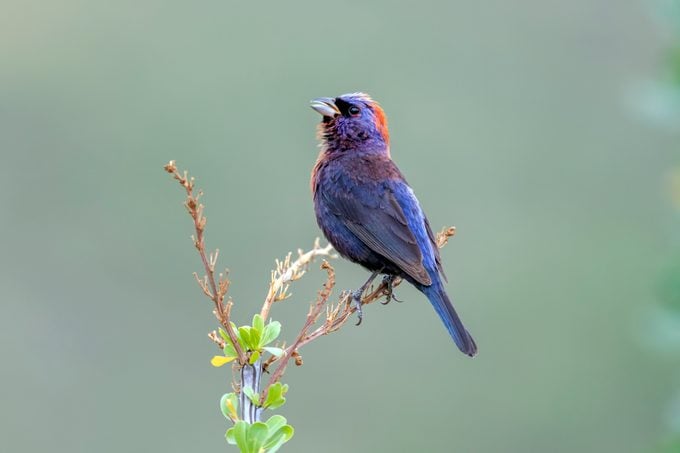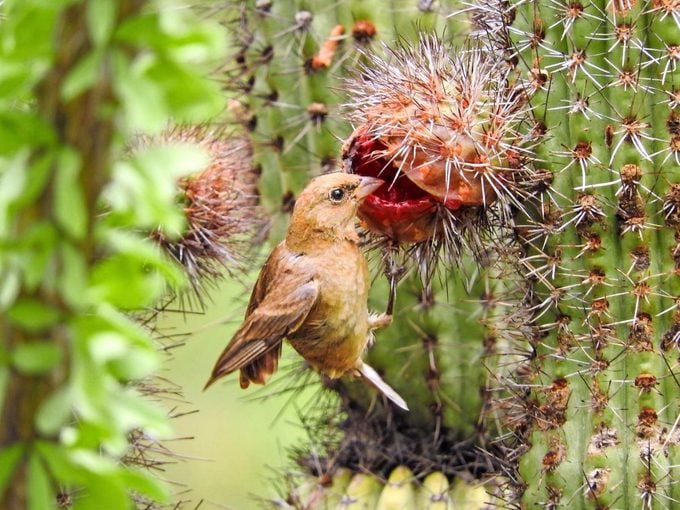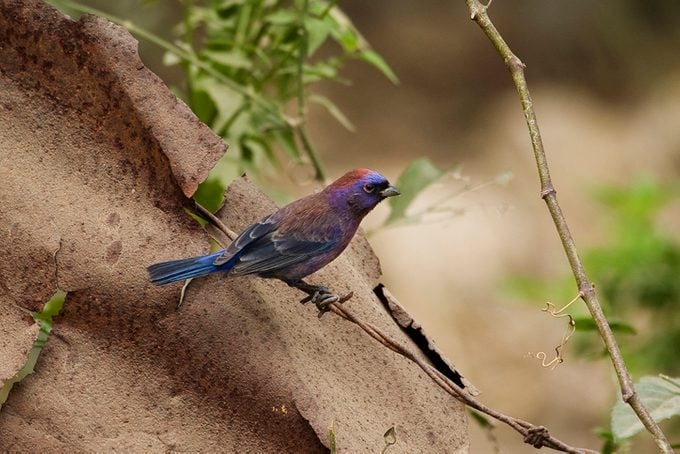How to Identify a Varied Bunting
Updated: May 25, 2021
Look for varied buntings along the southwest border in Texas and Arizona, or in Mexico. See photos of the males and females and learn what they eat.

Male Varied Bunting
Less well-known than its bunting family members, the indigo bunting, lazuli bunting and painted bunting, the male varied bunting is just as stunning. In the breeding season, males are a vibrant purple and red, with a distinctive red eye ring and a black patch near their bill. In the non-breeding season, males molt into brownish plumage. They are small songbirds, measuring 4 to 5 inches long.
Check out inspiring pictures of indigo buntings.

Female Varied Bunting
Female varied buntings and young males are lighter brown in color, with no visible streaking or wing bars.
“I took this shot on a hot summer day at the Arizona-Sonora Desert Museum in Tucson. I had never seen a female varied bunting eat from a cactus fruit, so it was very exciting for me to snap this moment,” says Dawn Arjes of Paw Paw, Illinois.
Learn how to identify snow buntings.

Varied Bunting Range and Habitat
You’ll only find these birds if you head way down to the southwest. Discover more desert birds of the southwest. Look for them in the summer breeding season along the southern border of Texas, New Mexico and Arizona. They are short-distance migrants and are year-round residents in Mexico.
Want to see one? Don’t miss the top 5 birding hotspots in southeast Arizona.
Despite their vibrant colors, this species can be hard to spot because they stay low in dense shubby areas, thorny thickets and woods. Varied buntings forage for insects on the ground, so you probably won’t see them at your bird feeders. They also eat some seeds and berries from plants.




















